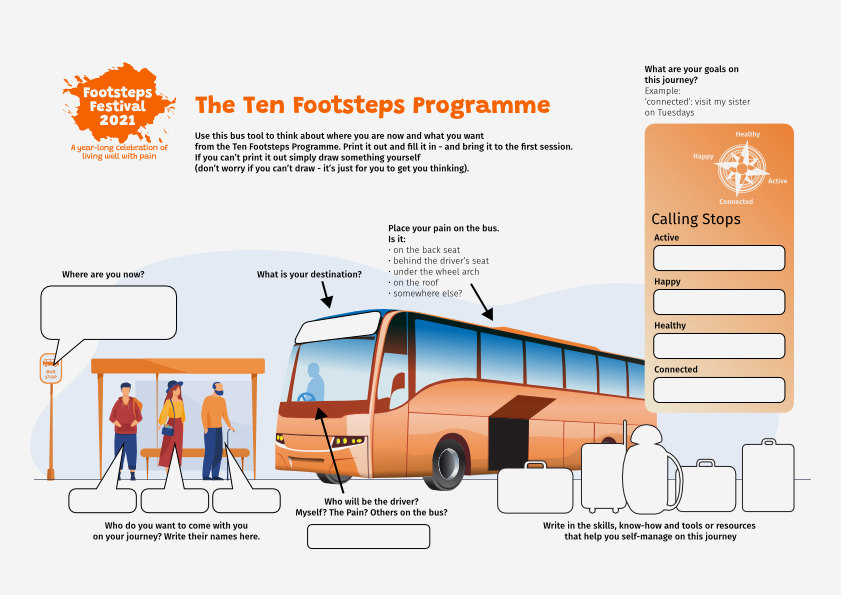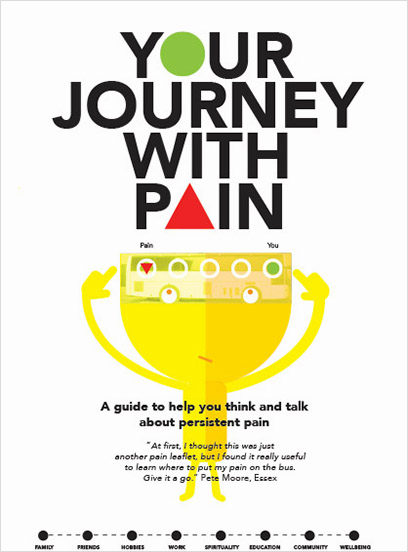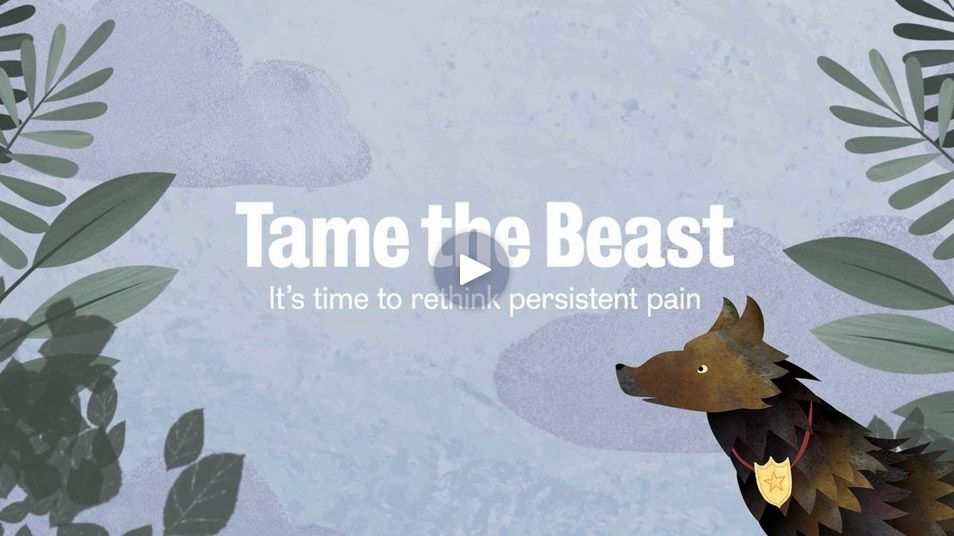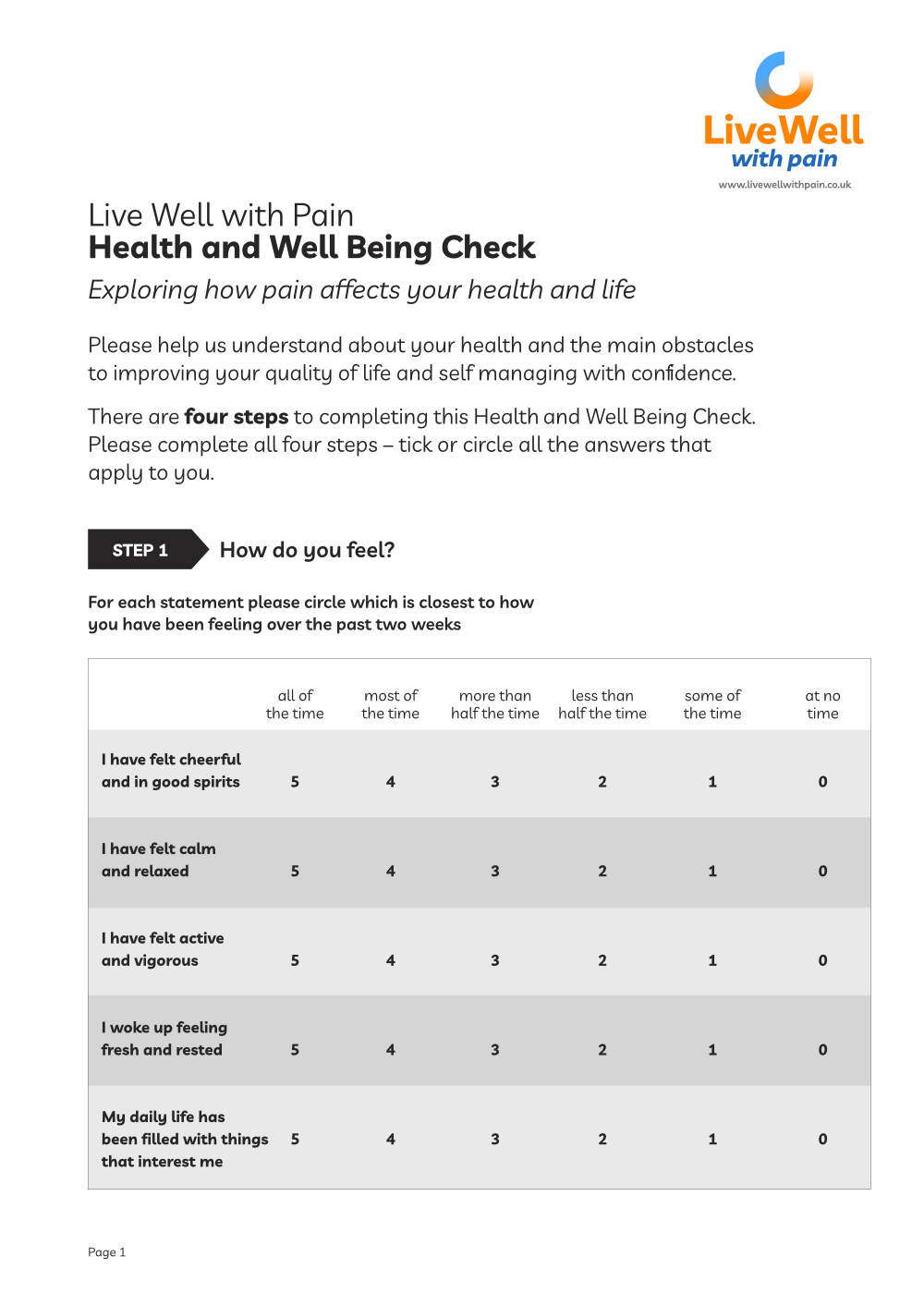Acceptance
Acceptance will help the person you are working with to shift attention from what cannot be changed to what can be changed.
Your role is to raise the concept of acceptance and offer support to the person to rethink and reflect. Here are some ideas of how you could do this:
- Offer stories of others who have been through this process
- Acknowledge that the loss and bereavement linked to living with pain is an important part of their personal pain story
- Introduce the possibility of using techniques like mindfulness or meditation
- Explain how they could shift their mindset from the past – “Why have I got pain?”– to the present – “What do I want to do each day?”
- Encourage the person to explain the concept of acceptance to family and friends
- Acknowledge they may need support with managing moods such as anxiety, anger or depression

Pain and Me – a story of acceptance
‘This video is my personal interpretation of my research on Acceptance and Commitment Therapy for chronic pain. It took me a long time to understand that acceptance was not the same as giving up or losing hope, but instead I’ve come to see it as a conscious decision to completely engage with life, including pain.’
Professor Tamar Pincus
with thanks to the Royal Holloway University of London, Psychology Department
Actions to take
Print off the any of the resources below and give them to the person you are working with.
Then invite them to let you know one thing they found of value, at their next consultation. Perhaps they can circle what was the key point for them or make a note. This can be a valuable starting point for discussing the value of acceptance and exploring the process together.
Encourage the person to sign up to Live Well with Pain so they can explore the Ten Footsteps themselves. They’ll find all the resources in this Practitioners’ Guide and more besides, to support them on their self management journey.
Resources you can use with the person you are supporting
A bus journey
The Bus Journey tool is a metaphor tool that can help people understand pain is part of them and their life at present. This is about learning ways to self manage pain by:
- Letting the person decide where they want to put the pain on their bus now, rather than in the driving seat or at the steering wheel.
- Supporting the person to decide what is the new direction of the bus journey, its route, new stops and which passengers they want on the bus from their family, friends and clinical team, social prescribers etc.
- Helping them set rewarding, paced goals and focus on their priorities for change.

Your journey with pain
People living with pain can self-complete this booklet. It uses the metaphor of a bus journey and is a great way for people to start on their journey of acceptance and where they want to focus their lives despite the pain.

Tame the Beast
Leading neuroscientist Lorimer Moseley and colleagues have created a powerful short animation that explains and guides the journey to acceptance and living well with pain – focusing on dealing with the pain (the beast) and the self.

Live Well with Pain Health and Wellbeing Check tool
The Live Well with Pain Health and Well Being Check tool is a self-completion, person-centred tool that can be shared easily with patients and clients.
The data from this completed tool will help identify the actual current impact of chronic pain on the individual and their health.
You can find a more detailed explanation of the Live Well with Pain Health and Well Being Check tool here.

Footstep 2 – Acceptance
Summary of key points
✔ Acceptance is key to moving on with self-care – be careful not to collude with false expectations!
✔ You can raise the concept of acceptance and offer support